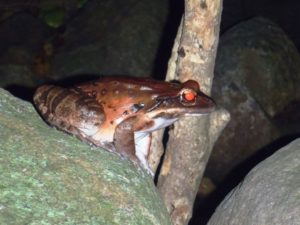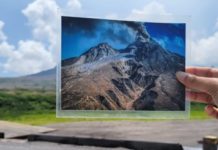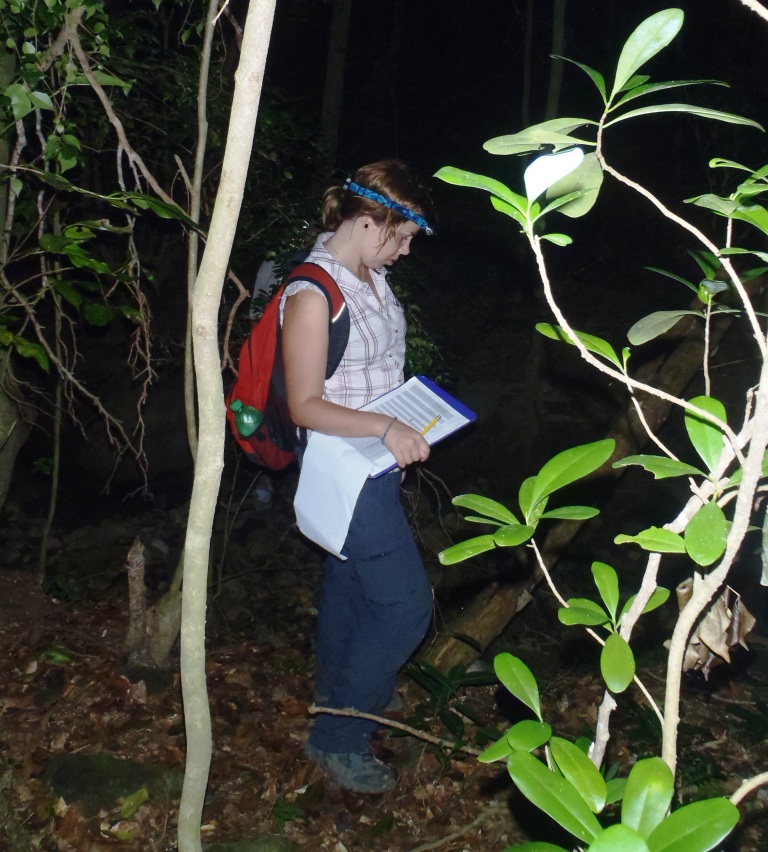So given that we now have some new frogs complete with radio-transmitters running around the island, it’s now time for the radiotracking to begin. The core team Sarah-Louise, Blacka and Lloydie are all wonderfully proficient at this having had lots of experience, but for us the new volunteers (Emma & Heléna) there is a steep learning curve to be conquered!

On Sunday Emma had her first shot of properly radio-tracking in the forest, whilst Heléna was on recording duty with Sarah-Louise mentoring, she’d had a little play with the transmitters a few days earlier, pre-release in order to check out the frequencies for each of the frogs so wasn’t too scared of the controls on the receivers (there are a lot!), and had quickly checked the frequencies again in the forest the night before following the first release, but actually using the transmitters to find the frogs in the forest, now that is a different matter! The team was split into two (Blacka & Rich, and Sarah-Louise, Heléna & Emma) and each team was due to find half the frogs in the forest. Using the radio-transmitter for most of the frogs didn’t seem to be too tricky as they hadn’t dispersed too much, although Emma did tend to follow the signal even if it meant going through trees and the undergrowth as opposed to the clear route 2 meters nearby… Thankfully Sarah-Louise and Heléna following with the data sheets had more sense than that! Actually finding the frog from tracking is a very satisfying experience, especially when some of them were in little hidey holes! (I’m looking at you mister-hiding-in-the-rocks-with-the-crabs mountain chicken!). There was one frog out of ours that was completely non-findable despite lots of walking up and down the paths, and across both sides of the ghaut. Slightly frustrating given it had only been released the night before but hopefully it will turn up soon! The night was called to an end at 23:20 by which point 20 out of the 24 frogs had been found. It was certainly satisfying to see the frogs hopping around in their natural environment, and also managing to use the transmitters to track them down! We’re just hoping that next time around we can find a few more!

Heléna has been looking forward to learning how to radio track for a long time and so finally Monday evening she got her opportunity to put it into practise, beginning with a tutorial from Emma who was now in charge of data inputting for the night. At first it was very difficult to distinguish the receiving beeps from the abundant Johnstone’s whistling frog calls however after a while you become more familiar with the sounds you need to listen out for and the best ways to hold and position the antennae. After the heavy rain early in the morning it was expected that the frogs would be very active this evening. This also meant we had to be a bit more careful as the ghaut was flowing with water and the rocks were very slippery. So we began following the path trying all of our frequencies in search of something but ended up going to much higher ground to find our frogs, which was quite difficult going through the thick of the forest trying to hold antennae up. Again we were missing a couple of frogs. But it was amazing to be able to find the released frogs again in the wild.

As much as we hope the frogs are enjoying their new environment, we’re determined that our next trip out in the field will be 100% successful and we find all the frogs in one night.
– Heléna Turner & Emma Downie, Volunteers







